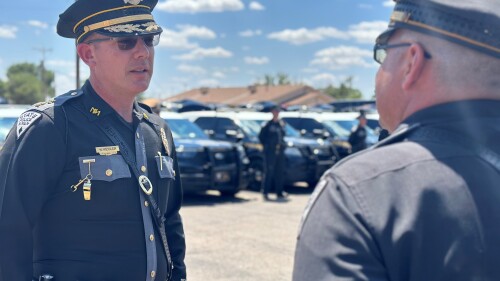The following content is part of Police1’s Police Leader Playbook, a resource aimed at helping new law enforcement leaders move beyond basic management and supervision skills and become inspirational leaders with integrity and passion. Through a handful of questions presented by Police1, veteran leaders reflect on their early days in leadership roles and offer advice, while newer leaders detail their experiences taking on a new position. Email editor@police1.com to offer your insights for the Police Leader Playbook.
Darrell Lowe has served as the Chief of Police for the Redmond (Wash.) Police Department since 2019. He is a 33-year law enforcement veteran who previously served the Santa Monica (California) Police Department. He has experience as a Division Commander, Executive Officer and Captain. Chief Lowe holds a master’s degree in Emergency Services Administration from California State University Long Beach, and is a graduate of the FBI National Academy, the Center for Creative Leadership and the Executive Leadership Institute at Drucker School of Management.
The Redmond Police Department is a mid-sized agency in King County, Washington, that is home to Microsoft and many well-known tech and space companies. The agency has 92 commissioned officers serving a resident population of 83,000 with 37,000 annual calls for service.
What was the incident or person in your career that put you on the path to becoming a chief?
I was fortunate to work for several exceptional leaders, and I learned a lot from all the leaders I worked for. I always wanted to lead an agency but came to a point when I didn’t think it was going to be in the cards for me and had to accept and make peace with that, but I stayed hungry and stayed focused. I kept growing and developing, and at last, the moment arrived.
What do you (or did you) want to accomplish, improve or make better in your first 30 days as chief, 6 months as chief and year as chief?
During the first 30 days, I just needed to make sure I kept my mouth shut and my ears open to listen and learn about my new agency. At the six-month mark, I began to introduce my vision and planted the seeds for the culture shift that needed to occur. At the year mark, it was time for the agency to begin to operate in the manner, speed and direction I wanted to take us.
How are you creating an organizational culture that people want to be a part of, to join and to stay?
By having high standards, embracing and enforcing accountability, paying attention to details, and embracing and bringing on board technology that increases efficiency and makes the officers’ jobs easier. By modeling the pride and a swagger that reflects our status as a premier agency
What’s your process for making major decisions?
I consider the impact on the end-user and, when possible, get feedback from those most impacted. I realize that change is unsettling even if it is necessary. I ensure we socialize the change, hear the concerns and give everyone a voice. I encourage alternative solutions, but at the end of the day, heavy is the head. Sometimes, I just have to move forward despite the pushback. For example, when I started our “pilot” DFR program, there were grumblings about taking a body from patrol, it being the chief pet project, etc. All true, but for the greater good. Now, the program is the only one full-time in the state and the officers now expect Air-1 as part of the call response.
How do you show your personnel that you are leading with these and other value-based behaviors?
I call balls and strikes period. I have been a part of this noble profession all of my adult life. I remind folks I didn’t start as a chief. I was a knucklehead patrol officer, sergeant, lieutenant, etc., so I’ve walked in all of those shoes, and I will never forget where I came from. I know mistakes happen and we will learn from them and get better, but we will hold employees accountable. I will support officers’ actions when and where warranted, but I will also call out inappropriate behavior and hold officers accountable as appropriate. I believe there must always be a path to redemption after a mistake is made. Every saint has a past, every sinner has a future.
Lightning leadership round
What is a leadership book, podcast or seminar you’ve found invaluable?
“Change the Culture, Change the Game” by Roger Connors and Tom Smith. It’s all about creating a culture of accountability by defining where the line is.
How do you organize your schedule and stay on schedule?
I don’t touch it. I have an incredible Executive Assistant. Leadership lesson: Surround yourself with people who have skills you don’t, get out of their way and let them thrive.
If you knew the budget request would be approved, what’s a big purchase you’d make for your department today?
A new public safety facility.
What is one way leaders can show they care about their people?
There is no one way. Either you do or you don’t, your actions will show which it is.
At the end of the workday, how do you recharge?
Audiobook or a variety of Spotify playlists on the drive home.








